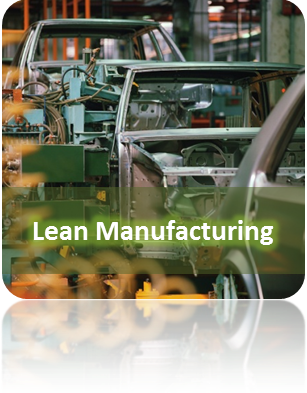 |
Beginning Your Journey With Lean
We often hear: “OK, I’m convinced that "lean" is the right approach to improving our business. Just give me the step-by-step instructions,
and I’ll do it." Unfortunately, there are no universal "step-by-step instructions." Each business will require a different approach to implementing
lean based on the business environment, the goals and objectives for the business, and the current manufacturing environment.
What we can suggest, is the path that has been taken by many of the companies that have successfully transitioned to lean manufacturing.
Key approach as below. Lean foundations should be initiated as early in the whole process.
|
|
|
|
Planning and Preparation
An organization gets ready for the change by determining what’s driving the business, identifying the key performance gaps, and establishing
goals related to the primary business issues. In addition, the executives and key organizational personnel need enough Lean Manufacturing
education to enable them to envision what this change could look like when it’s done.
|
|
Value-Stream Mapping
To properly execute the change, the organization needs to take aim at the activities or projects that
will be necessary to achieve their goals and objectives. Value-Stream Mapping is a technique that enables
an organization to understand their current process, distinguish value from waste in the process, and
envision the future state after the waste is removed. The gaps between the current state and the future
state form the basis for an implementation plan.
|
|
Foundations
There are some fundamental tools that support a successful lean implementation and should be initiated as
early in the process as practical, including: an employee involvement culture, workplace organization
(5S), etc.
|
|
Update Operations Strategy
Assuming the Lean activities are well underway internally, most businesses will begin to look externally,
often called the “Demand Driven Supply Chain”. It is time to look more closely at marketplace expectation,
marketplace demand trends, and changes to the supply chain. As we do this, many more people need to
understand Lean fundamentals and how to look at Lean from many different perspectives. Internally, many
other functions need this education including Procurement, Finance, Engineering, and Sales and Marketing.
Also, since we will likely be collaborating with trading partners, our trading partners need this education
as well unless they are already on a Lean Journey.
|
|
Value Chain Mapping
We are now expanding our Lean vision to include key trading partners. The Value Stream Mapping approach
remains valid but now we include critical process of our trading partners. It is not necessarily true that
we are only focused on having our partners change, often, we can see additional opportunities to be “a
better supplier” or be “a better customer”. The whole Value Chain is quite integrated and we are looking
for ways to better “synchronize” all processes.
|
|
Project Management and Execution
As we did internally, now we have identified opportunities to make the whole Value Chain operate more
effectively. We may discover opportunities to “see” demand sooner and flatten out variability. We may
see approaches to reduce lead times in the supply side of the business or improve responsiveness or
quality. In almost all cases, we are looking for “win-win” projects.
As we take this journey through the “Path”, we cannot ignore the various Planning systems that are in
place that can and will influence our success and sometimes change priorities. By integrating Lean with
these planning systems, we can insure our priorities are aligned and be prepared to make mid-course
corrections if business conditions change.
My friends, Are you ready to start your lean journey now.
|